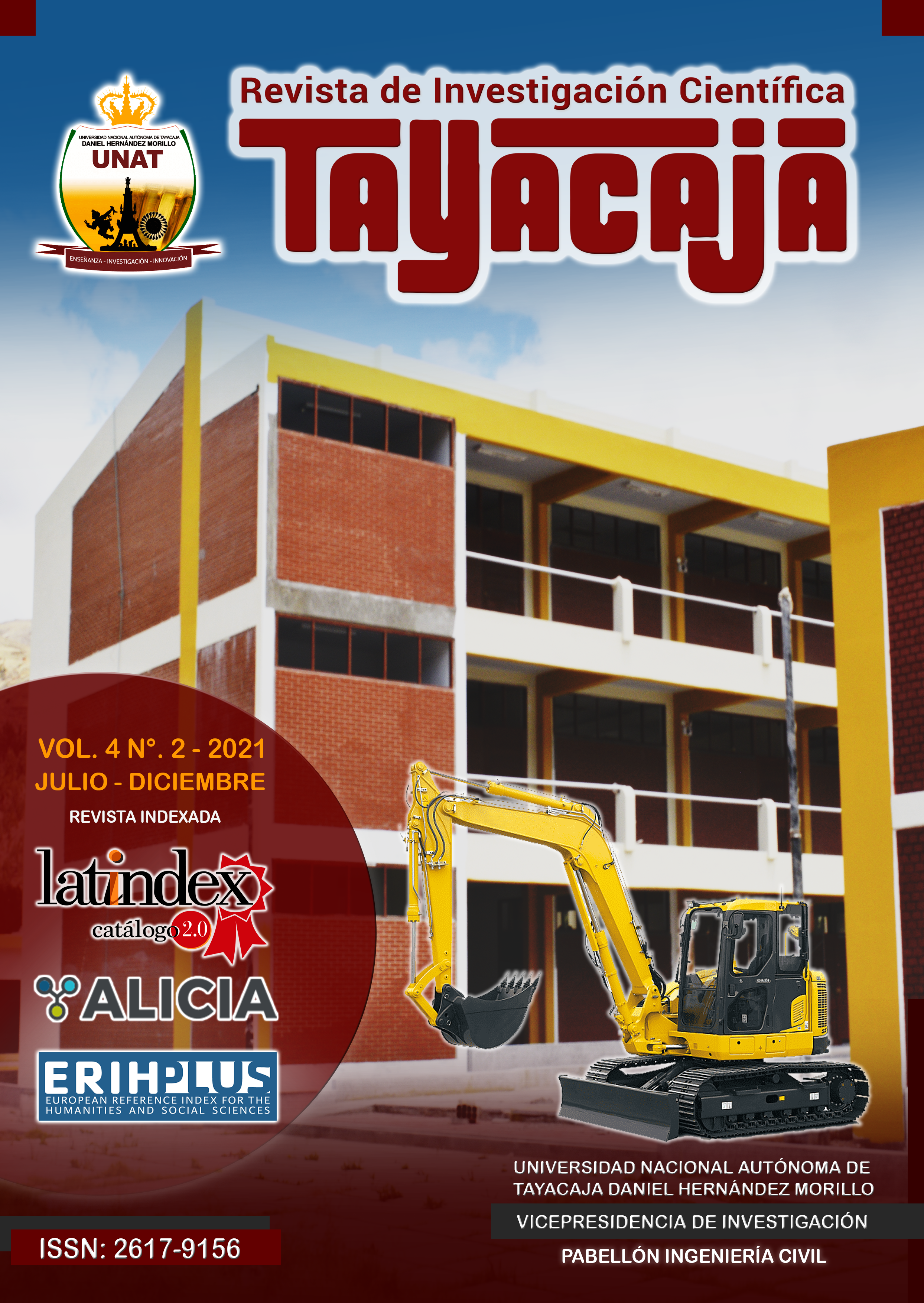Abstract
The present research work, has the objective of determining the quantity of carbon in the live aerial arboreal biomass; to do so, seven 50m x 50m plots were defined; randomly distributed within the area of the current research; twenty eight families and seventy three arboreal species were identified from a total of 1837 specimens; the family with the most abundance was Rubiaceae, the specie with the most abundance was Cinchona pubescens Vahl (Quina amarillo) with 143 specimens identified. The quantity of stored carbon in the aerial arboreal biomass was an average of 70.08 tC/ac with respect to the plots studied; statistically, the stored carbon has a heterogenous behavior within the area in study; due to the fact that it is found to be influenced by the height and type of vegetation category; at 1066 – 1187 masl the greatest quantity of carbon was found; and the mature trees influence the quantity of carbon at a 50%, followed by the rest of the categories.
References
Allen, W. (2001). Statistics applied to business and economy. Trad. by Yelka Garcia. 3ed. Bogota, Colombia, McGraw-Hill. 543p.
Borrero, J. (2012). Aerial biomass and carbon content in the campus of the Pontificia Universidad Javeriana in Bogotá. Thesis for Ecologist Degree. Bogota Colombia. Pontifical Javeriana University. 54p.
Chave J, Andalo S, Brown A, Cairns J, Chambers H, Folster F, Fromard N, Higuchi T, Kira J, Lescure B, Nelson H, Ogawa H, Puig B, Riera Y, Yamakura. (2005). Tree allometry and improved estimation of carbon stocks and balance in tropical forests. Oecology 145: 87-99
Cubero, JY, Rojas, R. (1999). Carbon fixation in plantations of Gmelina arborea, Tectona grandis and Bombacopsis quinata in the cantons of Hojancha and Nicoya. Thesis (Bachelor's Degree in Forest Sciences). National University. Guanacaste, Costa Rica. 93 pages
Cuellar, J., Salazar, E. (2016). Dynamics of carbon stored in the different systems of land use in Peru. Lima Peru. National Institute of Agrarian Innovation INIA. 217 pages
Dominguez, E. (2010). Instruments for measuring dasometric variables. Foundations and elaboration with the student of the training cycle "Higher Technician in Management and Organization of Landscape Natural Resources". Innovation and Educational Experiences. Innovation and Educational Experiences. Cordoba, Argentina, 9 p.m.
Gonzales, P. (2013). Economic assessment of CO2 sequestration in plantations of Vochysia lomatophylla (standl) "quillosisa" of different ages at CIEFOR Puerto Almendra. Thesis (Tropical Forest Ecology Engineer). National University of the Peruvian Amazon. Faculty of Forest Sciences. Iquitos-Peru. 74 p.
Guere, F. (2015). Carbon stored in the protected forest area of the Tingo María National Park. Thesis Mg. Sc. In Agroecology Mention in Environmental Management. Tingo Maria, Peru. Postgraduate School of the National Agrarian University of La Selva. 109 pages
IDEAM. (2010). Executive summary of the technical report on the estimation of the potential reserves of carbon stored in the aerial biomass in the natural forests of Colombia, Institute of Hydrology, Meteorology and Environmental Studies of Colombia. Bogota DC (Colombia). 42p.
IPCC. (2001). The Carbon Sinks.
IPCC. (2003). Integrated pollution control and prevention.
IPCC. (2018). Impacts of 1.5°C Global warming on natural and human systems. IPCC special report.
Lamprecht, H. (1990). Forestry in the Tropics: Forest ecosystems in tropical forests and their tree species; possibilities and methods for sustained use. (Deutsche Gesellschaft für Technische Zusammenarbeit) GTZ. German Federal Republic, Germany. 335p.
Blanket, M. (1988). Silvicultural analysis of two types of humid lowland forest on the Atlantic slope of Costa Rica. Thesis. mg. SC. Turrialba, Costa Rica. CATIE. 137 pages
Morels, A. (2007). Sampling in finite populations.
Murray, R., Jacobson, M. (1982). An evaluation of dimension analysis for predicting shrub biomass. Journal of Range Management 35:451–454.
Ortiz, M. (1993). Techniques for estimating the growth and yield of individual trees and forests. Carthage, Costa Rica. Technological Institute of Costa Rica. 71 p.
Pinelo, G. (2000). Manual for the establishment of permanent sampling plots in the Maya Biosphere Reserve, Peten, Guatemala. Turrialba, Costa Rica. Tropical Agronomic Center for Research and Teaching. 68p.
Salvador, A. (2014). Diversity of tree species (decits/individual) as an indicator of environmental quality at the different levels of the Tingo María National Park. Pre-professional practice. Tingo Maria, Peru. Academic Department of Environmental Sciences. 71p.
Sosa, J. (2016). Economic valuation of CO2 sequestration in three types of forest in the District of Alto Nanay, Loreto - Peru - 2014. Thesis for Forestry Engineer. Iquitos, Peru. School of Forestry Engineering of the National University of the Peruvian Amazon. 99p.
Valencia, R. (2015). Diversity of forest species in the wild area of the Tres de Mayo sector of the Tingo María National Park. Thesis for RNR Forestry Mention Engineer. Tingo Maria, Peru. Faculty of RNR of the National Agrarian University of La Selva. 140p.
Vallejo, M., Londoño A., López R., Galeano G., Álvarez E., Devia W. (2005). Establishment of permanent plots in forests of Colombia. Bogota DC, Colombia. Alexander von Humboldt Biological Resources Research Institute. 310 p.
Vargas, V. (2007). Descriptive Statistics for Environmental Engineering with SPSS. Cali, Colombia. FERIVA SA 312p printer.
Wieman, M., Williamson, G. (1989). Wood specific gravity gradients in tropical dry and montane rain forest trees, American Journal of Botany 76 (6): 924-928.

This work is licensed under a Creative Commons Attribution-NonCommercial 4.0 International License.
Copyright (c) 2021 Luis Eduardo Ore Cierto, Julio Brayan Vargas Arata, Wendy Caroline Loarte Aliaga, Juan Daniel Oré Cierto, Edilberto Díaz Quintana






